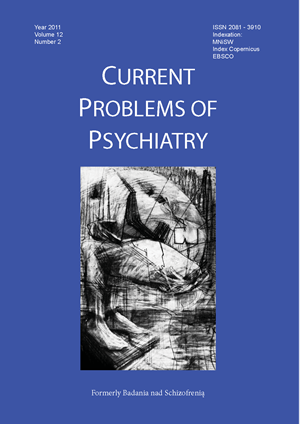Evaluation of pregnancy induced receptor pathway of programmed cell death of renal tubular epithelial cells
Keywords:
kaspase 8, programmed cell death, kidney, pregnancyAbstract
The aim of this study was immunohistochemical evaluation of extrinsic pathway of apoptosis in renal epithelial cells in pregnant rats including time.
We evaluated in immunohistochemical way expression of caspase 8 – activated in receptor’ s pathway. Rats used in this experiment was divided into 4 groups – 8 individuals each: I group – female rats which was fertilized and decapitated in 10 day of pregnancy, II group female rats which was fertilized and decapitated in 20 day of pregnancy III group female rats which was fertilized and decapitated in 10 day after delivery VI group – control – female rats which decapitated in 30 day of experiment.
Specimens of kidneys taken to examine we analyzed in immunohistochemical standard three-step method detecting caspse8 protein.
Immunohistochemical positive reaction increased in all experimental groups compared to control. There was no significant differences between groups examined in 10 day of pregnancy and in 10 day after delivery.
Pregnancy induced hormonal changes activated apoptosis by induction of extrinsic pathway by activation of caspase 8 manly on the and of pregnancy (20th day of pregnacy).
Extrinsic pathway was induced in 10 day of pregnancy on the same level like 10 days after delivery. This level was lower than in 20day of pregnancy.
References
1. Motyl T. Regulation of apoptosis: involvment of Bcl-2 related proteins. Reprod. Nutr. Dev., 1999; 39: 49-59.
2. Maslińska D. Programowana śmierć komórki (apoptoza) w procesie zapalnym. Nowa Medycyna-Reumatologia IV, 1999; 12: 34-41.
3. Chmielewski M., Linke K., Zabel M., Szuber L. Apoptosis in the liver. Gastroent. Pol., 2003; 10: 453-462.
4. Bielak-Żmijewska A. Mechanizmy oporności komórek nowotworowych na apoptozę. Kosmos. Problemy Nauk Biologicznych, 2003; 52: 157-171.
5. Krammer P.H. CD95(APO-1/Fas)-mediated apoptosis: live and let die. Adv. Immunol., 1999; 71: 163-210.
6. Pryjma J. Monocyty krwi obwodowej – apoptoza po fagocytozie bakterii oraz amiany funkcjonalne w następstwie kontaktu z komorkami apoptotycznymi www. fnp.org.pl/programy aktualne/jachranka/profPryjma.pdf. 2004; .1-19.
7. Brębowicz G. Położnictwo i ginekologia - Repetytorium 2010; 12-16: 75-81.
8. Stennicke HR. Caspases - at the cutting edge of cell death. Symp. Soc. Exp. Biol., 2000; 52: 13-29.
9. Schmitz I., Kirchhoff S., Krammer P.H. Regulation of death receptor-mediated apoptosis pathways. Int. J. Biochem. Cell Biol., 2000; 32: 1123-1136.
10. Depuydt B., van Loo G., Vandenabeele P., Declercq W. Induction of apoptosis by TNF receptor 2 in a t-cell hybidoma is FADD dependent and blocked by caspase-8 inhibitors. J. Cell Sci., 2005; 118: 497-504.
11. Kischkel FC., Lawrence DA., Tinel A., Leblanc H., Virmani A., Schow P., Gazdar AI. Death receptor recruitment of endogenous caspase –10 and apoptosis initiation in the absence of caspase 8. J. Biol. Chem., 2001; 276: 46639-46646.
12. Mroz P., Młynarczuk I. Mechanizmy indukcji apoptozy i zastosowania TRAIL w terapii nowotworów. Post. Biol. Kom., 2003; 30: 113-122.
Downloads
Published
Issue
Section
License
Copyright (c) 2011 Authors

This work is licensed under a Creative Commons Attribution-NonCommercial-NoDerivatives 3.0 Unported License.


